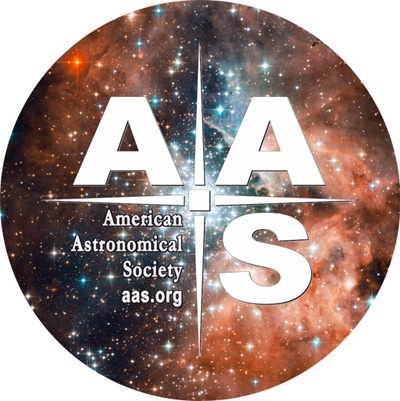10 March 2021
Susanna Kohler

This still comes from a simulation of two neutron stars merging. Observations of collisions like these may help us determine the maximum mass a neutron star can attain. [National Aeronautics and Space Administration(US)/</a>MPG Institute for Gravitational Physics [Max-Planck-Institut für Gravitationsphysik] (Albert Einstein Institute)(DE)/ZIB/M. Koppitz and L. Rezzolla]
What’s the largest mass that a neutron star — the dense, collapsed core of a massive star — can grow to before further collapsing into a black hole? Recent gravitational-wave events are providing new insight.
Finding the Maximum

Artist’s impression of a strongly magnetized neutron star. [NASA/Penn State University(US)/Casey Reed.]
Neutron stars consist almost entirely of neutrons packed together at the density of atomic nuclei. This extreme mass in such a small space results in an extraordinary inward gravitational pull that increases as more neutrons are packed in. When the crushing gravitational force exceeds the combined quantum and nuclear forces pushing outward, the star collapses to form a black hole.
What is the maximum mass limit above which a neutron star collapses? Theory suggests that, for a non-rotating neutron star, it’s somewhere around 2 or 3 times the mass of the Sun — but the precise value relies on the unknown state of matter inside the neutron star. To get around this missing information, we need observational constraints to help us pin down how heavy a neutron star can be.
Collisional Clues
In recent years, gravitational waves have provided valuable new insight. Two particular mergers of compact objects have tempted us with clues:
GW170817
In this event, two neutron stars in the range of 1.1–1.6 solar masses merged to form a larger object, which we think collapsed into a black hole shortly after merger. The gravitational-wave and electromagnetic observations of this process point to a maximum neutron star mass that’s less than 2.3 solar masses.
GW190814
In this event, a black hole of more than 20 solar masses merged with an object of just 2.5–2.7 solar masses — but we don’t know whether that smaller object was a black hole or a neutron star. If it was a non-rotating neutron star, then this would imply that the upper limit for neutron star mass is above 2.5 solar masses.
Can we reconcile these two potentially conflicting pieces of information? A study led by Antonios Nathanail (Institute for Theoretical Physics(DE) presents new analysis that further explores what these mergers tell us about neutron star limits.
A Lower Upper Limit
Nathanail and collaborators analyzed these two mergers by employing a genetic algorithm — an algorithm that explores a large parameter space and looks for optimized solutions by mimicking the process of natural selection. Using this algorithm, the authors identified which maximum mass solutions are consistent with gravitational-wave and electromagnetic observations of GW170817 and GW190814 and numerical simulations of mergers.

Probability distribution function for the maximum mass of a non-rotating neutron star, as estimated by the authors’ genetic algorithm (blue curve) and in a previous study of GW170817 (purple curve). [Nathanail et al. 2021]
From their systematic investigation, the authors show that a large maximum neutron star mass — like the 2.5 solar masses required if GW190814’s secondary was a non-rotating neutron star — doesn’t mesh with our observations of GW170817 or with expectations from numerical simulations of gravitational wave production.
Instead, the authors find that a maximum neutron star mass of about 2.2 solar masses neatly reproduces the observations of GW170817 and is consistent with numerical simulations. This upper limit implies that GW190814’s secondary was too large to have been a non-rotating neutron star. Instead, GW190814 was likely the merger of two unequal-mass black holes.
Citation
“GW170817 and GW190814: Tension on the Maximum Mass,” Antonios Nathanail et al 2021 ApJL 908 L28.
https://iopscience.iop.org/article/10.3847/2041-8213/abdfc6
See the full article here .

five-ways-keep-your-child-safe-school-shootings
Please help promote STEM in your local schools.

AAS Mission and Vision Statement
The mission of the American Astronomical Society is to enhance and share humanity’s scientific understanding of the Universe.
The Society, through its publications, disseminates and archives the results of astronomical research. The Society also communicates and explains our understanding of the universe to the public.
The Society facilitates and strengthens the interactions among members through professional meetings and other means. The Society supports member divisions representing specialized research and astronomical interests.
The Society represents the goals of its community of members to the nation and the world. The Society also works with other scientific and educational societies to promote the advancement of science.
The Society, through its members, trains, mentors and supports the next generation of astronomers. The Society supports and promotes increased participation of historically underrepresented groups in astronomy.
The Society assists its members to develop their skills in the fields of education and public outreach at all levels. The Society promotes broad interest in astronomy, which enhances science literacy and leads many to careers in science and engineering.
Adopted June 7, 2009
